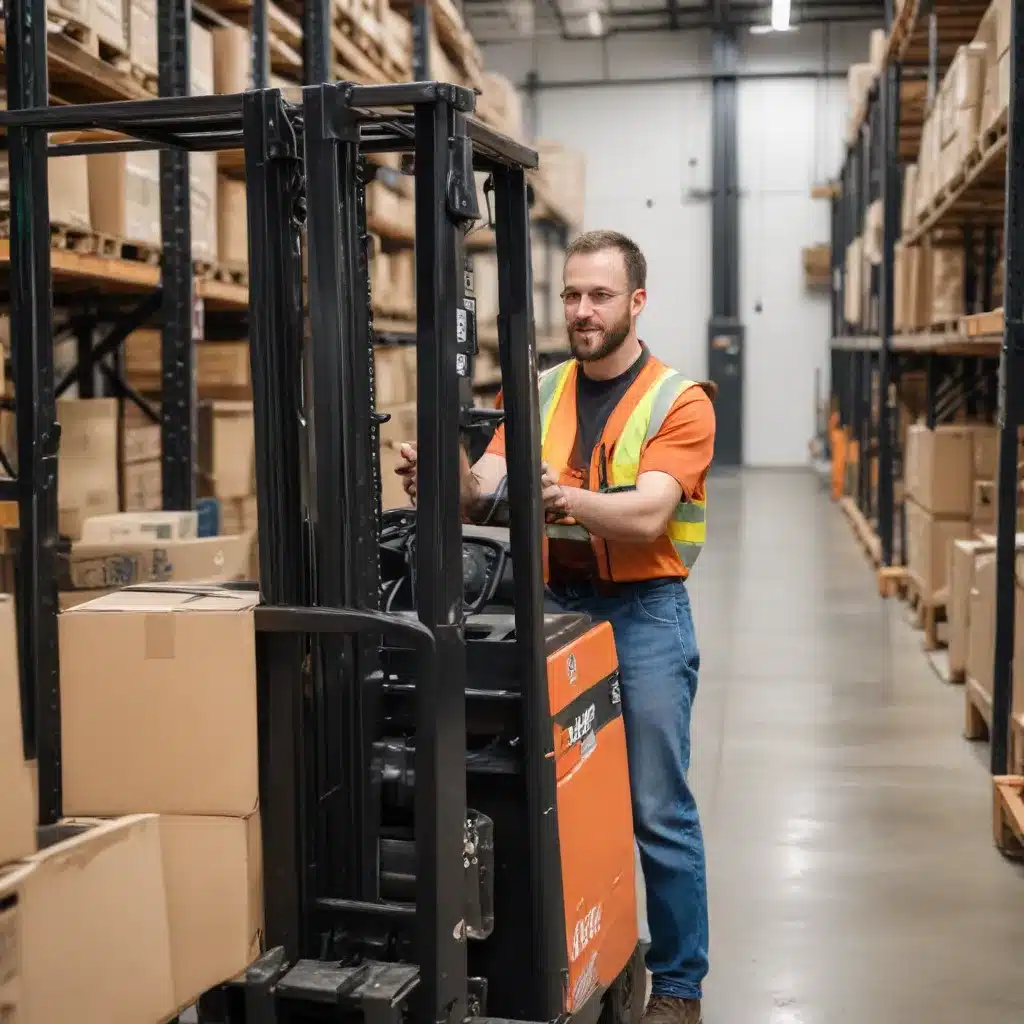
The Changing Landscape of Forklift Operator Training
As the forklift industry continues to evolve, the need for comprehensive and adaptable training programs has become increasingly crucial. Forklift operators play a vital role in the smooth operation of warehouses, logistics hubs, and manufacturing facilities, and their safety and proficiency directly impact productivity, efficiency, and risk mitigation. In this article, we will explore the benefits of a blended learning approach to forklift operator training, leveraging both traditional classroom instruction and innovative virtual platforms to deliver optimal training outcomes.
The Importance of Forklift Operator Training
Forklift operation is a specialized skill that requires both theoretical knowledge and practical expertise. Operators must be well-versed in equipment handling, load management, safety protocols, and emergency procedures to ensure the safety of themselves, their colleagues, and the surrounding environment. Comprehensive training not only enhances individual competence but also helps organizations comply with OSHA regulations and mitigate the risk of costly accidents and liability issues.
Transitioning from Classroom to Blended Learning
Traditionally, forklift operator training has been delivered predominantly through in-person, classroom-based instruction. While this approach has its merits, it can be limited in its flexibility and accessibility, particularly for organizations with geographically dispersed operations or employees with varying schedules. The emergence of blended learning, which combines traditional classroom sessions with online or virtual components, offers a more dynamic and adaptable solution.
The Benefits of Blended Learning for Forklift Operator Training
1. Increased Accessibility and Flexibility
Blended learning models allow forklift operators to access training content and resources at their convenience, regardless of their location or schedule. By integrating online modules, video tutorials, and virtual simulations, organizations can reach a wider audience and accommodate the diverse needs of their workforce. This flexibility is particularly beneficial for industries with shift-based operations or employees who may be stationed at remote job sites.
2. Enhanced Retention and Knowledge Transfer
The combination of classroom instruction and interactive virtual experiences can significantly improve knowledge retention and transfer for forklift operators. Classroom sessions provide the foundation of theoretical knowledge, while virtual simulations and hands-on practice enable operators to apply their learning in a safe, controlled environment. This blended approach reinforces key concepts, solidifies understanding, and better prepares operators for real-world scenarios.
3. Consistent Training and Standardization
Blended learning platforms can help organizations standardize their forklift operator training across multiple locations or departments. By centralizing the development and delivery of training content, companies can ensure consistency in the information and skills being imparted, regardless of the instructor or training location. This consistency enhances the overall quality of training and promotes a shared understanding of best practices throughout the organization.
4. Cost-Effectiveness and Scalability
Implementing a blended learning approach can be more cost-effective than relying solely on in-person, classroom-based training. By reducing the need for travel, physical classroom spaces, and instructor time, organizations can realize significant savings while still delivering high-quality training. Additionally, the scalability of virtual components allows companies to easily adapt their training programs to accommodate fluctuations in the workforce or changes in operational needs.
5. Continuous Improvement and Data-Driven Insights
Blended learning platforms often incorporate data-tracking and analytics capabilities, enabling organizations to monitor the performance and progress of their forklift operators. By analyzing metrics such as quiz scores, simulation results, and user engagement, trainers can identify areas for improvement, refine training content, and make data-driven decisions to enhance the overall effectiveness of the program.
Designing an Effective Blended Learning Curriculum for Forklift Operators
To maximize the benefits of a blended learning approach, it is essential to carefully design and structure the forklift operator training curriculum. This process should involve the following key considerations:
Content Curation and Sequencing
Carefully curate the training content to ensure a seamless integration of classroom instruction and virtual components. Identify the core theoretical knowledge that is best suited for in-person delivery, and supplement it with interactive online modules, videos, and simulations that reinforce and apply the concepts.
Blended Learning Instructional Strategies
Leverage a variety of instructional strategies within the blended learning framework, such as:
– Flipped classroom: Assign pre-class online modules to introduce key concepts, then use classroom time for hands-on practice, discussions, and problem-solving.
– Synchronous virtual sessions: Facilitate live, interactive sessions where instructors can answer questions, provide demonstrations, and facilitate group activities in real-time.
– Asynchronous self-paced modules: Offer self-guided online courses that allow operators to learn at their own pace, with opportunities for self-assessment and feedback.
Seamless Integration of Virtual Simulations
Incorporate high-quality virtual forklift simulators that closely mimic real-world operating conditions. These simulations provide a safe, controlled environment for operators to practice maneuvering, load handling, and emergency response, without the risks associated with physical equipment.
Ongoing Assessment and Feedback
Implement a comprehensive assessment strategy that combines online quizzes, practical evaluations, and performance-based metrics. Provide timely feedback to operators, enabling them to identify areas for improvement and receive personalized guidance.
Continuous Monitoring and Iterative Improvements
Continuously monitor the effectiveness of the blended learning program, gathering feedback from operators, instructors, and organizational stakeholders. Analyze data and insights to identify opportunities for refinement, whether it’s updating content, enhancing virtual simulations, or adjusting the balance between classroom and online instruction.
Conclusion
As the forklift industry continues to evolve, the adoption of blended learning for operator training represents a strategic shift that can yield significant benefits for organizations. By combining the strengths of traditional classroom instruction with the flexibility and innovation of virtual platforms, companies can deliver comprehensive, accessible, and data-driven training programs that enhance operator competence, improve safety, and drive overall operational excellence.
By embracing the blended learning approach, forklift operators and their employers can stay ahead of the curve, adapting to the changing landscape and ensuring the long-term success and sustainability of their operations. As a seasoned industry expert, I encourage you to explore the potential of blended learning and integrate it into your forklift operator training strategies to unlock new levels of productivity, safety, and competitive advantage.

